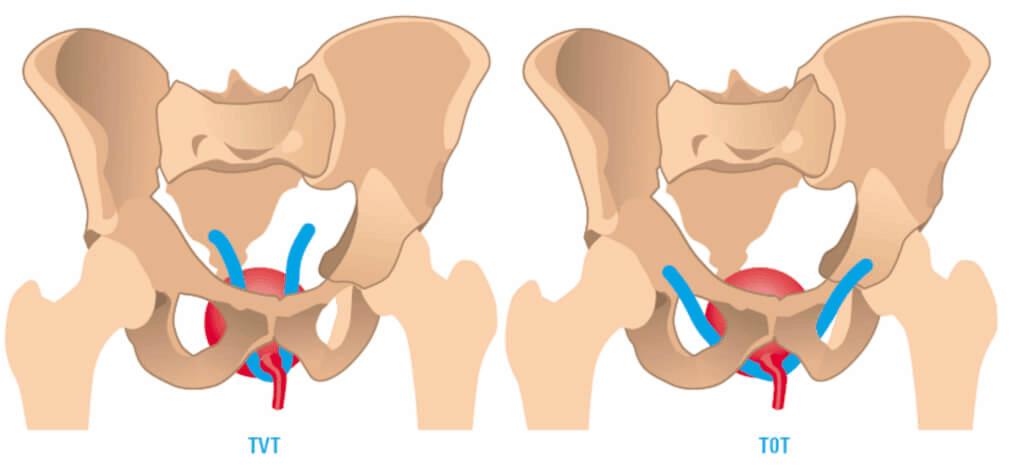Stress urinary incontinence is defined as the loss of voluntary control over urination.
Urinary incontinence is not a disease but a symptom. The severity of the symptoms ranges from occasional mild urination while coughing or sneezing, to an unbearable urge to urinate, which is accompanied by frequent significant urination. And if it is more common in the elderly, incontinence is not an inevitable consequence of aging. When incontinence disrupts daily life activities, it is time for the patient to see a doctor. At the Atlas General Hospital, Dr. Sladjana Kovacevic – urology specialist, successfully treats stress incontinence in both sexes.
Urinarna inkontinencija – vrste:
Urinary incontinence – types:
- Stress incontinence – with increased pressure on the bladder there is urine leakage (coughing, sneezing, lifting heavy loads)
- Urgent incontinence: sudden unbearable need to urinate, followed by urination. Symptoms also occur at night. The causes can be various, from mild infections to neurological disorders and diabetes.
- Overflow incontinence: constant dripping of urine as a result of insufficient emptying of the bladder.
- Functional incontinence: mental or physical illnesses that indirectly affect urination. For example, in severe arthritis, the patient cannot unbutton his pants in time.
- Mixed incontinence: several different types of incontinence.
Temporary urinary incontinence can be caused by: certain drinks, foods or medications that have a diuretic effect: alcohol, caffeine, carbonated juices, mineral water, artificial sweeteners, chocolate, hot peppers, spicy foods, citrus fruits, large doses of vitamin C, medications for hypertension , sedatives, muscle relaxants. Incontinence can be the result of harmless conditions such as inflammation of the bladder or constipation. With inflammation of the urinary bladder, the mucous membrane is irritated and the urge to urinate is increased. In constipation, a full rectum, which is located next to the bladder, irritates the nerves that are connected to the nerves of the bladder and increases the urge to urinate.

Prolonged urinary incontinence can be the result of various conditions:
- Pregnancy: hormonal imbalance and fetal weight lead to incontinence
- Childbirth: during childbirth, the pelvic floor muscles weaken; nerves are damaged, which over time can lead to pelvic organ prolapse and incontinence.
- Age: the muscles of the bladder weaken over the years and the capacity of the bladder decreases. The frequency of involuntary contractions of the bladder muscles also increases.
- Menopause: a decrease in estrogen secretion leads to a weaker regeneration of the bladder and urethral mucosa, which causes incontinence.
- Hysterectomy: the bladder and uterus are connected by ligaments, which are damaged during hysterectomy, and there is damage to the pelvic floor muscles, which all leads to incontinence.
- Physical obstruction: A stone or tumor in the urinary tract can impede the flow of urine and lead to incontinence.
- Neurological diseases: Multiple sclerosis, Parkinson’s disease, stroke, spinal cord injuries, can lead to disorders of the conduction of nerve impulses to the bladder, and consequent incontinence.
Stress urinary incontinence – risk factors:
Gender: Women are more likely to suffer from incontinence due to anatomical differences, childbirth, menopause. In men, the most common cause of incontinence is benign prostate enlargement.
Age: age increases the likelihood of incontinence due to weakening of the bladder and pelvic floor muscles.
Obesity: Increased intra-abdominal pressure on the bladder increases the likelihood of stress incontinence.
Smoking: Tobacco increases the risk of urinary incontinence.
Positive family history
Other diseases: diabetes mellitus, neurological diseases.
Complications that you feel due to problems with involuntary urination
Dermatological: frequent dermatitis due to constantly irritated and moist skin.
Urinary tract infections: Incontinence increases the risk of frequent urinary tract infections.
Quality of life: incontinence affects daily life activities and significantly reduces the quality of life.
Stress urinary incontinence – prevention:
Normal body weight
Pelvic floor muscle exercises (Kegel exercises)
Avoid caffeine, strong alcoholic drinks, spicy foods, smoking.
Stress Urinary incontinence – treatment
Treatment can be conservative and surgical
1. Conservative treatment consists of:
- Strengthening the pelvic floor muscles (Kegel exercises, electrostimulation)
- Topical use of estrogen creams
- Drug therapy (anticholinergics)
Kegel exercises – exercises for strengthening the pelvic floor muscles:
-Make a movement as if trying to prevent urination – by tightening the muscles between the rectum and vagina. When you do that, hold the muscles in contraction for 10 seconds.
-After that, relax, and then repeat the exercise at least ten more times (10 times). It is advisable to do these exercises eight to ten times a day (8-10 times).
-To achieve good results, you must exercise persistently, every day, especially if you already have a problem with urinary retention and if you have not exercised preventively before!
You can do the exercises while standing, and in any place (in the office, elevator, while standing and waiting in line …).
2. Surgical treatment is certainly the most effective method of treatment and involves the placement of synthetic mesh so-called slings, transopturative tape (TOT)

The meaning of surgical intervention in resolving stress urinary incontinence is the restitution of the normal position and support of the vesicourethral segment, which usually leads to the solution of this problem.
The operation itself is very safe, short one and can be performed under all types of anesthesia. The success of resolving stress urinary incontinence with these surgical techniques is very high and is around 90%!
Given that the transobturator approach has a minimal number of surgical complications, it is to be expected that it occupies a leading position in the surgical treatment of stress urinary incontinence.
TOT gold standard in the treatment of female stress urinary incontinence – SUI
